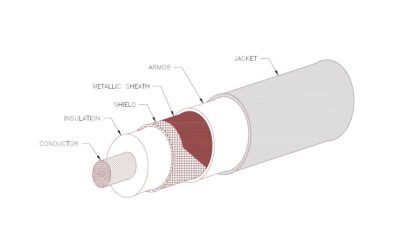Troy Byers from Commissioning Consultants provides input on how commissioning of HVAC systems is being handled during COVID-19

Troy Byers, Board President of the AABC Commissioning Group (ACG) and Partner at Commissioning Consultants LLP, chimed in on how his firm and commissioning professionals are managing COVID-19 business and engineering encounters.
Do you anticipate your firm’s professional office spaces will change in the next six months? Be redesigned or changed in size?
Byers: No.
How are engineering or technical aspects of the job being completed remotely?
Byers: To limit the number of personnel on project sites our commissioning technicians have used Apple FaceTime to bring their supervising commissioning authority to the site virtually. This allows for real-time collaboration and is particularly useful when resolving installation issues.
Is your firm conducting any travel to visit clients or projects? If so, what types of projects are you working on?
Byers: Yes. Examples are:
- Marine Corps Barracks, Camp Lejeune, C.: Currently witnessing duct leakage testing and equipment installation verification.
- Power Train Assembly Plant, Naval Air Station, Corpus Christi, Texas: Our role as building envelope commissioning agent involves site visits to observe installation of envelope assemblies and components as well as witnessing Division 07 Air Tightness Testing and Thermography of the building envelope.
- Wake County Schools, Raleigh, C.: Currently witnessing startup of HVAC equipment and performing functional performance testing.
What supply chain issues are you experiencing? Is your firm dealing with any challenges with materials or products from manufacturers or suppliers?
Byers: We recently upgraded an employee’s laptop and found that “off-the-shelf” options were limited. In addition, “custom build” options had long lead times.
In down markets, retrofit/renovation and maintenance/repair/operation tend to increase. How is your firm working with clients and building owners to keep this conversation going (and keep the money coming in)?
Byers: A building owner is best served when the right team is assembled for a given project. Our goal is to introduce a team to the building owner that will provide valuable insight into the building systems operation. We partner with test and balance firms, controls contractors, mechanical contractors and others depending on the building systems and project goals. Successful projects lead to ongoing relationships.
Have building owners or clients approached you to assist with changes or updates to their building to help protect against COVID-19? What services can you offer?
Byers: Yes; we are currently working with health care clients to ensure all patient care spaces meet the pressurization and air change requirements of the Centers for Disease Control and Prevention guidelines as well as ASHRAE 170: Ventilation of Health Care Facilities. Services provided include revising sequences of operation and operating setpoints for air handling units and validation of pressurization and air change rates in critical spaces.
What HVAC, test-and-balance or air balancing challenges have you encountered? What unique challenges are you solving?
Byers: We encountered a situation where a health care facility constructed a wall to isolate one entire wing. The challenge was having the ability to maintain proper pressurization in the isolated wing. In this case a new exhaust fan with variable frequency drive provided a solution.
For hospitals and health care facilities, do you anticipate demand for specialty or pressurized environments?
Byers: Yes. To an extent, hospitals may be restoring systems to “pre-COVID” mode of operation. As of March 10, 2020, updated guidance provided in CDC Interim Infection Prevention and Control Recommendations for Patients with Suspected or Confirmed Coronavirus Disease 2019 (COVID-19) in health care Settings recommends placing patients in a regular examination room with the door closed. Airborne infection isolation rooms should be reserved for patients undergoing aerosol generating procedures or for diagnoses such as active tuberculosis.
What else is changing in these buildings?
Byers: Facility directors appear to have an increased awareness of the ASHRAE 170 requirements with regard to minimum air change rates and pressurization in patient care spaces.
How do you keep your engineers and subject matter experts updated on the latest technologies and tools? How will these professionals enhance their engineering skills in the “new business world”?
Byers: CxEnergy 2020 is an annual conference hosted by the AABC Commissioning Group (ACG) along with the Associated Air Balance Council (AABC) and the Energy Management Association (EMA). When the April 2020 in-person conference was canceled, the organizers developed a virtual conference with a series of webinars presented weekly. Our engineers join the weekly webinars and then held a follow-up meeting via Microsoft Teams to debrief and share related experiences to enhance the topic.
Do you think the demand for smart building technologies will change over the next six months? If so, how will you meet this increased demand? If not, how will you continue to work with clients to stay connected to their buildings and engineered systems?
Byers: Predictive maintenance and analytics in HVAC automation will likely continue to grow, perhaps rapidly. Our team of engineers has significant field experience with HVAC systems, which will be invaluable to building operators that need to document the baseline of existing systems in order to best utilize the analytics and fault detection of automation software.




